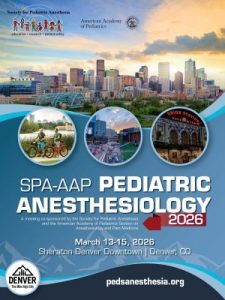As the name suggests, SPA one-pagers are concise summaries of a topic that fit on a single sheet of paper. They are meant to be short, succinct, and to the point, with critical take-away messages. We chose a wide range of medical education, faculty development, and wellness topics to develop these open pagers. We would like to thank all the faculty who wrote and peer-reviewed these submissions. We have also included links to selected Academic Medicine Last Pages.
Please let us know if you have any feedback or suggestions for additional topics. Contact Us.
Debnath Chatterjee, MD, FAAP
Editor, SPA One-Pagers
Medical Education Topics
- Strategies for Improving Clinical Teaching in the Operating Room
- How to Write Well-Defined Learning Objectives
- How to Give a Great Presentation
- How to Give a Virtual Presentation
- How to Find Copyright-Free Images
- How to Develop an Educational Curriculum
- How to use the one-minute preceptor method
- How to Use Active Learning Strategies
- How to Use the Flipped Classroom Model
- How to Use Cognitive Aids
- How to Teach Procedural Skills
- How to Use Simulation For Education
- How to Turn Your Teaching into Scholarship
- How to Model, Encourage, and Teach Professionalism
- Adult Learning Theories
- How to Write a Good MCQ
- How to Give Effective Feedback
- How to Design and Lead an Effective PBLD
- So, You Want to be a Moderator?
Faculty Development Topics
- How to Get Promoted
- How to Modernize Your CV with a Digital Portfolio
- How to Negotiate
- How to Have a Difficult Conversation with Your Boss or Colleague
- How to Have a Difficult Conversation with Patients and Families
- How to Break Bad News to Families
- What to Do After an Adverse Event: An Overview and Suggested Algorithm
- How to Approach Medical Errors
- How to Design and Implement a Quality Improvement Project
- How to be an Effective Mentor
- How to be a Great Mentee
- Everyone Can Use a Coach
- How to Write a Compelling Letter of Recommendation
- Supercharge Your Academic Productivity with Generative Artificial Intelligence
Sustainability Topics
- Decreasing Pharmacological Waste
- Eliminating Desflurane
- Low Flow Anesthesia in Pediatric Patients
- Nitrous Oxide – More Harm Than Good?
- OR Recycling Checklist
- Reusable vs. Single-Use Laryngoscopes in Anesthesia Practice
- Environmentally Responsible Mask Induction – NEW
Wellness Topics
- Self-Compassion
- Compassion Practice: Preventing Burnout
- How to Create a Better Environment for Lactating Anesthesia Clinicians
- Having Each Other’s Backs Breaking the Silence on Physician Suicide and Fostering a Collegial Environment
- How to Set Yourself Up For Financial Wellness
- The 5 Professional Languages of Appreciation
- Substance Use Disorder Among Anesthesiologists and Providers
- A Guide to Meeting the ACGME Well-Being Requirements
- Why GRIT is Critical to Outstanding Achievement and Perseverance
- How to Set Up a Peer Support Program and Be a Good Peer-Supporter
- How to Apply the PERMA Model to Develop Resilience and Well-Being
- Sleep Hygiene
- Setting SMART Goals to Enhance Your Personal Well-Being
- Technology Best Practices to Promote Well-Being
- Mindful Listening
- Three Good Things: The Power of Positive Psychology
- Building Good Habits
- Building Resilience
- Difficult Conversations
- Gratitude and Appreciation
- Imposter Syndrome
- How to Create a Peer-To-Peer Recognition Program
- Put Me In, Coach! Decreasing Burnout and Improving Wellness Through Coaching
- Introduction to Wellness Topics: A Quick Hit Program
- SPA H2O: Healers Helping Each Other
- Now What? First Steps After a Cancer Diagnosis: S.O.S Survival Guide
- Microaffirmations
Links to Academic Medicine (AM) Last Pages
- A Medical Educators’ Guide to #MedEd. Link
- Your Attending Will #Tweet You Now: Using Twitter in Medical Education. Link
- Congratulations! Your Article Has Been Accepted. Now What? Media, Social Media, and Other Outlets for Promoting Your Work. Link
- Going Up? Tips for the Medical Educator’s “Elevator Pitch.” Link
- Hit the Ground Running: Engaging Early-Career Medical Educators in Scholarly Activity. Link
- The Effective Use of Videos in Medical Education. Link
- Understanding Creative Commons. Link
- Avoiding 5 Common Pitfalls of Simulation Design in Medical Education. Link
- Propelling Educational Innovation to Publication in Five Steps. Link
- From Monotony to Motivation: Effective Presentation of Epidemiological Data. Link
- Six Strategies for Effective Learning. Link
- Tracking the Scholarly Conversation in Health Professions Education: An Introduction to Altmetrics. Link
- Ten Tips to Move From “Revisions Needed” to Resubmission. Link
- Presenting Data From Health Professions Education Research in Tables and Figures. Link
- Avoiding Four Visual-Design Pitfalls in Survey Development. Link
